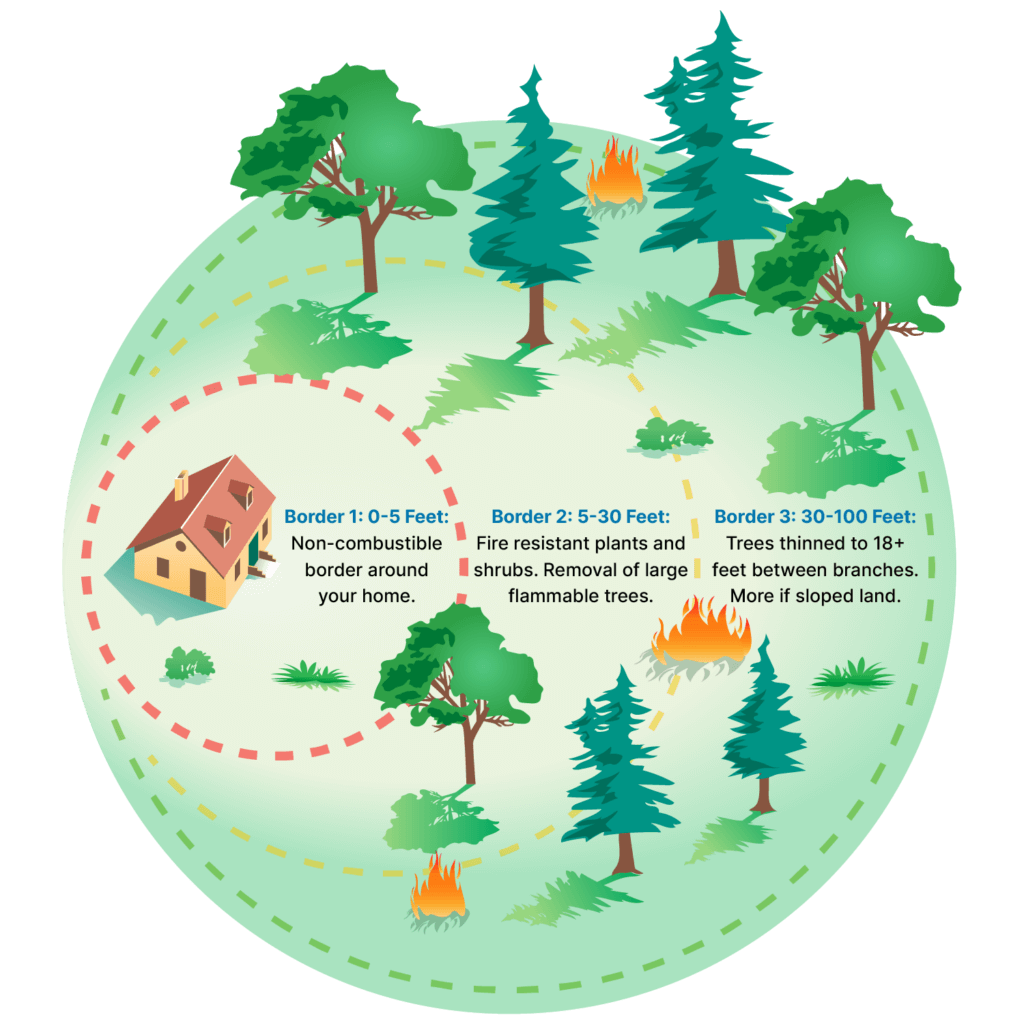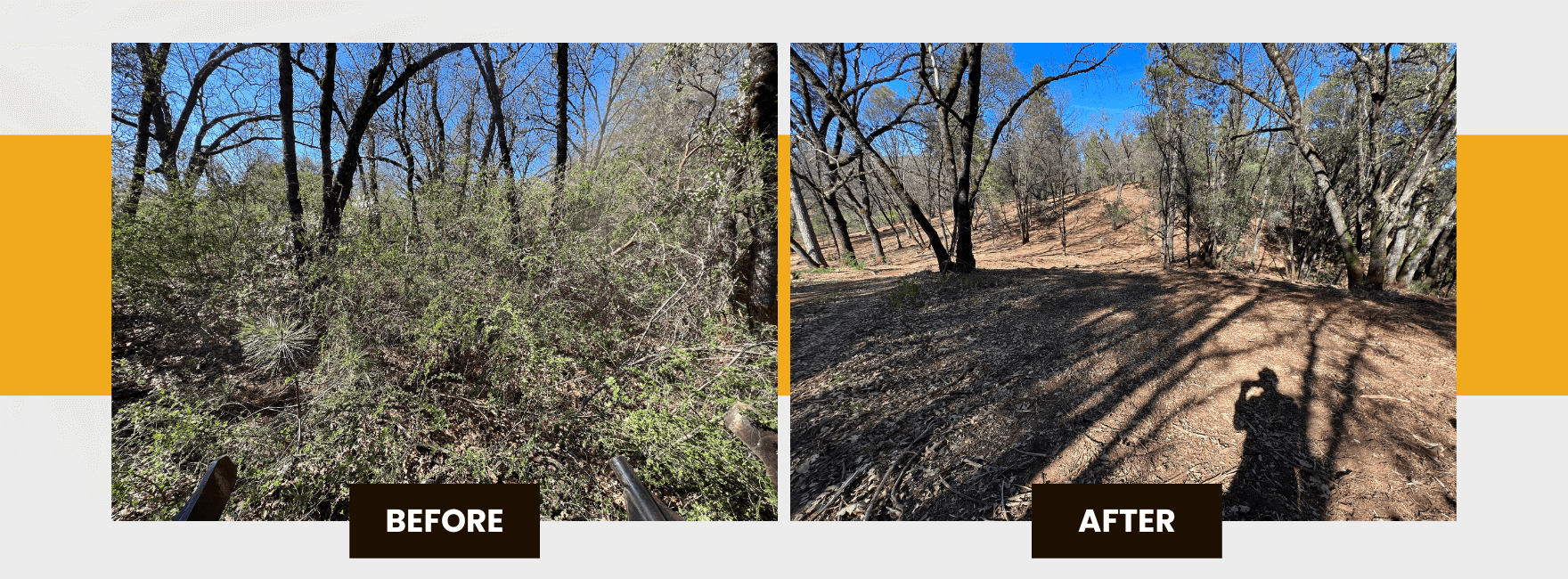Wildfire Mitigation & Land Clearing
See How Peak Industries Can Help You
Land Clearing & Fire Protection
Recognizing forests as essential components of ecological balance, biodiversity, and climate stability, the urgency of mitigating the impact of wildfires can’t be understated. Vegetation management, incorporating controlled burns, selective thinning, and the creation of firebreaks, proves instrumental in breaking the continuity of fuel sources and promoting safe ecosystems.
Land Clearing & Fire Protection
Recognizing forests as essential components of ecological balance, biodiversity, and climate stability, the urgency of mitigating the impact of wildfires can’t be understated. Vegetation management, incorporating controlled burns, selective thinning, and the creation of firebreaks, proves instrumental in breaking the continuity of fuel sources and promoting safe ecosystems.

Defensible Space
Creating defensible space around a home is a crucial step in wildfire prevention and protection. This involves strategically managing the vegetation and landscaping to reduce the risk of fire spreading to the property. Key measures include maintaining a clear zone around the house by removing dead plants, dry leaves, and other flammable materials. Additionally, choosing fire-resistant plants and spacing them appropriately can help create a buffer zone.
Defensible Space
Creating defensible space around a home is a crucial step in wildfire prevention and protection. This involves strategically managing the vegetation and landscaping to reduce the risk of fire spreading to the property. Key measures include maintaining a clear zone around the house by removing dead plants, dry leaves, and other flammable materials. Additionally, choosing fire-resistant plants and spacing them appropriately can help create a buffer zone.

Forestry and Fire Mitigation through Vegetation Management
In the face of escalating wildfires proactive forestry measures, particularly vegetation management, have emerged as a critical strategy to safeguard our various ecosystems. Recognizing forests as essential components of ecological balance, biodiversity, and climate stability, the urgency of mitigating the impact of wildfires can’t be understated. Vegetation management, incorporating controlled burns, selective thinning, and the creation of firebreaks, proves instrumental in breaking the continuity of fuel sources and promoting safe ecosystems. By strategically modifying vegetation, we not only reduce the risk of catastrophic wildfires but also mimic natural processes that aid regeneration. Contact us to discuss the pivotal role of vegetation management in preserving forests and the intricate web of life dependent on these ecosystems with our sustainable forestry approaches.
Mastication and Excavation
Post Storm Land Clean Up
Wildfire Reduction and Debris Removal
Right of Way Clearing
Defensible Space Clearing
After Fire Cleanup and Recovery Operations with Private and Government Agencies
Working With Peak Industries, LLC Is Simple
Request A Quote For Your Land Project
Click the button below to schedule a time with one of our specialists for a site visit.
Schedule Your Site Assessment
Conducting a site evaluation for forest fire mitigation involves a detailed assessment of the landscape to identify potential fire hazards and vulnerabilities.
Execute Wildfire Mitigation Work
We’ll work with your schedule to find a time to complete the project.


